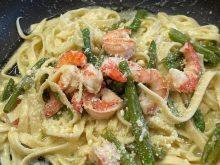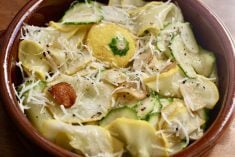Reading labels is paramount in providing your family with sustainably and ethically sourced fish and seafood. Sometimes this requires reading between the lines and being aware of what is not on the label.
Sustainability means meeting human development needs while preserving the environment.
For many people, the idea of eating sustainably harvested or farmed fish has become complicated. Our choices are further complicated by our buying habits.
More than two-thirds of the fish and seafood consumed in North America is farmed shrimp, farmed salmon, canned tuna and farmed tilapia.
Read Also

Know what costs are involved in keeping crops in the bin
When you’re looking at full bins and rising calf prices, the human reflex is to hold on and hope for more. That’s not a plan. It’s a bet. Storage has a price tag.
Shrimp farming is popular in Asia and is often done at the expense of the coastal mangrove forests. With these forests removed, the land is more vulnerable to tsunamis and hurricanes. The loss of mangroves also negatively impacts the absorption of carbon.
This past year, news articles exposing the slave trade in shrimp fishing and processing have surfaced but shrimp continues to be a favourite party food.
Labelling in the grocery store does little to enlighten us on what was involved in seafood collection.
If it is cheap and peeled, it may come from Asia where illegal labour has been reported.
Which is better: farmed or wild salmon? Many feel farmed salmon is not as healthy as wild.
The environmental concerns with farmed fish include the transfer of disease and parasites to the wild population and the escape of farmed fish into the wild where breeding could pose a threat to native species.
The omega 3 in wild population comes from the fish eating plankton and algae. Strict rules are now in place to monitor the type of food used in fish farming, which mainly consists of prepared diets of plants, grains and fishmeal.
Canned tuna is labelled light or white. Light tuna is usually skipjack, a cousin of tuna, and is plentiful so sustainability is not an issue. It is also cheap. It has a fishy taste and mushy texture.
White tuna is albacore, which has a firm texture and mild flavour and accounts for about 30 percent of canned tuna.
Albacore is caught on a line that can be several miles long with up to 3,000 baited fishhooks. It is dangled at a depth where the endangered Bluefin tuna swims so it can also catch several other species of fish. Marine life often die before the line is checked.
Tilapia is popular with its mild flavour and low price. Knowing how it is farmed is important information for the consumer.
Tilapia farms in China are often found near highly industrialized regions where the water, soil and air are contaminated. That could account for the low price.
The Monterey Bay Aquarium’s Seafood Watch program, www.seafoodwatch.org, has been compiling data since 1999.
They have a printable pocket guide and a free smartphone app that you can download to help you at the grocery store.
Their recommendations list best choices, good alternatives and ones to avoid.
In Canada, the Vancouver Aquarium’s Ocean Wise program www.oceanwise.ca, has an extensive list of recommendations of wild and farmed fish and seafood best choices.
The Ocean Wise logo is an assurance that the menu item is a good choice for keeping ocean life healthy and abundant for generations to come.
Two more trademarked labels that are helpful are the Marine Stewardship Council (MSC) that applies only to fish, crustaceans and seafood caught in the wild and Aquaculture Stewardship Council (ASC) that applies to responsibly farmed fish, crustaceans and seafood.
These organizations monitor food additives, legal compliance, preservation of the natural environment and water resources, biodiversity and a responsible use of animal feed and help safeguard livelihoods and sustain communities.
What do these organizations say about our favourite four?
The Belize Shrimp Grower Association has gained certification from ASC. The Monterey Bay Seafood Watch recommends buying U.S. and Alaska farmed shrimp and avoiding imported shrimp.
Canada and U.S. wild shrimp and Ecuador and Honduras farmed ones are a good alternative. Ocean Wise recommends U.S. and Canada wild shrimp and a select group of farms around the world.
Wild salmon is recommended from Alaska and Pacific U.S., New Zealand and Canada. Farmed open net salmon is not recommended from Norway, Chile, Scotland, Atlantic U.S. and Canada and British Columbia, with the exception of Blue Circle brand from Norway.
Seafood Watch and Ocean Wise recommend troll and pole caught albacore and skipjack tuna from the Pacific and Atlantic.
They do not recommend tuna from the Indian Ocean or any deep-set line. Ocean Wise does recommend some tunas caught in the Indian Ocean depending on the species and method of catch.
For tilapia, the best choices are from the U.S., Canada and Ecuador.
Even with this clear labelling, it isn’t easy to always make the best choice.
I have purchased Pacific salmon only to get home and discover it was processed in China.
Other ambiguous labels include the terms, responsibly sourced or sustainably caught.
They could be suppliers cashing in on the sustainability movement without proper certification.
We must also make restaurants more accountable. Chef Ned Bell from Vancouver is working to raise awareness with his Chefs for Oceans campaign, www.chefsforoceans.com, and declare March 18 as Canada’s National Sustainable Seafood Day.














